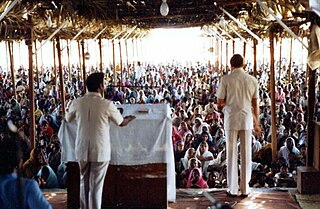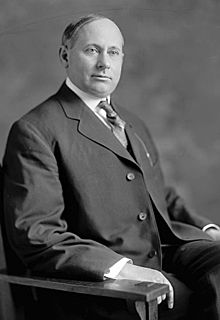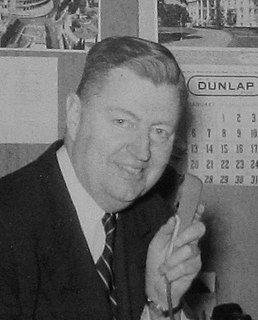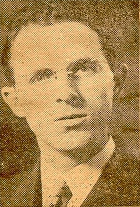Related Research Articles

Craighead County is a county located in the U.S. state of Arkansas. As of the 2020 census, the population was 111,231. The county has two county seats — Jonesboro and Lake City. Craighead County is Arkansas's 58th county, formed on February 19, 1859, and named for state Senator Thomas Craighead. It is one of several dry counties within the state of Arkansas, in which the sale of alcoholic beverages is largely prohibited.

Jonesboro is a city located on Crowley's Ridge in the northeastern corner of the U.S. State of Arkansas. Jonesboro is one of two county seats of Craighead County. According to the 2020 Census, the city had a population of 78,576 and is the fifth-largest city in Arkansas. In 2020, the Jonesboro metropolitan area had a population of 133,860 and a population of 179,932 in the Jonesboro-Paragould Combined Statistical Area.

Calvary Baptist Church is a Baptist independent church, located at 123 West 57th Street between the Avenue of the Americas and Seventh Avenue, near Carnegie Hall in Midtown Manhattan, New York City. The 123 W. 57th Street facility is under renovation - until the renovation is complete, Calvary will gather every Sunday at 10 a.m. at Assembly Hall on the Manhattan campus of Hunter College, located at 695 Park Ave, New York, NY 10065, North Building, E. 68th St. The church also gathers online every Sunday morning at live.cbcnyc.org.

A revival meeting is a series of Christian religious services held to inspire active members of a church body to gain new converts and to call sinners to repent. Nineteenth-century Baptist preacher Charles Spurgeon said, "Many blessings may come to the unconverted in consequence of a revival among Christians, but the revival itself has to do only with those who already possess spiritual life." These meetings are usually conducted by churches or missionary organizations throughout the world. Notable historic revival meetings were conducted in the US by evangelist Billy Sunday and in Wales by evangelist Evan Roberts. Revival services occur in local churches, brush arbor revivals, tent revivals, and camp meetings.

William Marrion Branham was an American Christian minister and faith healer who initiated the post–World War II healing revival, and claimed to be a prophet with the anointing of Elijah, who had come to herald Christ's second coming; some of his followers have been labeled a "doomsday cult". He is credited as "a principal architect of restorationist thought" for charismatics by some Christian historians, and has been called the "leading individual in the Second Wave of Pentecostalism." He made a lasting influence on televangelism and the modern charismatic movement, and his "stage presence remains a legend unparalleled in the history of the Charismatic movement". At the time they were held, his inter-denominational meetings were the largest religious meetings ever held in some American cities. Branham was the first American deliverance minister to successfully campaign in Europe; his ministry reached global audiences with major campaigns held in North America, Europe, Africa, and India.

John Franklyn Norris, commonly known as J. Frank Norris was a Baptist preacher and controversial Christian fundamentalist.

Thaddeus Horatius Caraway was a Democratic Party politician from the U.S. state of Arkansas who represented the state first in the U.S. House of Representatives from 1913 to 1921 and then in the U.S. Senate from 1921 until his death.

Shubal Stearns, was a colonial evangelist and preacher during the Great Awakening. He converted after hearing George Whitefield and planted a Baptist Church in Sandy Creek, Guilford County, North Carolina. Stearns' highly successful ministry was related to the rise and expansion of the Separate Baptists — especially in much of the American South.

Carl Curtis McIntire, Jr., known as Carl McIntire, was a founder and minister in the Bible Presbyterian Church, founder and long-time president of the International Council of Christian Churches and the American Council of Christian Churches, and a popular religious radio broadcaster, who proudly identified himself as a fundamentalist.
David Ring is a Christian evangelist and motivational speaker who has cerebral palsy. Since 1973, Ring has challenged thousands of people with his signature message - "I have cerebral palsy... What's your problem?" He currently resides in Nashville, Tennessee, with his wife and four children.

Bascom Ray Lakin was a Baptist preacher and evangelist.

Guerdon Elmer Lowman, more familiarly G. E. Lowman was an American Christian clergyman and a pioneering international radio evangelist beginning in 1930, following a successful business career.

Leonard Gaston Broughton was a fundamentalist Baptist minister, medical doctor, founder of Tabernacle Baptist Church in Atlanta, Georgia and of Tabernacle Infirmary, which later became Georgia Baptist Hospital.

Louis Sylvester Bauman was a Brethren minister, writer, and Bible conference speaker, holding influential leadership in the Brethren Church and the "Grace Brethren" movement which evenly divided the denomination in 1939. He served in several pastorates, in particular the First Brethren Church of Long Beach, California where he was pastor for thirty-four years (1913–1947).

Highway 141 is designation for two north–south state highways in Northeast Arkansas. The longer segment was created in 1931 and extended throughout the mid-20th century to the current alignment connecting Jonesboro and points north. The Jonesboro segment was a former city street added to the state highway system in 1973. Both are maintained by the Arkansas Department of Transportation.
Several special routes of U.S. Route 49 exist. In order from south to north they are as follows.

Verna Elisha Howard, known as V. E. Howard, was an American minister and radio evangelist based in Texarkana, Texas, who founded the International Gospel Hour.
J. D. Grey, sometimes known by his adopted name as James David Grey, was a major figure in the Southern Baptist Convention and from 1937 to 1972 was the pastor of the large First Baptist Church of New Orleans, Louisiana.

Roy Elonzo Davis was a leader and founding member of the 1915 Ku Klux Klan. Davis was Second Degree of the KKK under William J. Simmons and later became National Imperial Wizard (leader) of the Original Knights of the Ku Klux Klan. He worked closely with Simmons, and was a coauthor of the 1921 KKK constitution, bylaws and rituals. Davis spent decades as a KKK recruiter, at one point being named "Royal Ambassador" and an "Official Spokesperson" of the KKK by Simmons. Davis and Simmons were both expelled from the KKK in 1923 by Hiram Wesley Evans, who had ousted Simmons as leader. Simmons started the Knights of the Flaming Sword branch of the KKK and with Davis's help retained the loyalty of many KKK members. Davis was later reappointed second in command of the national KKK organization by Imperial Wizard Eldon Edwards, a position he held until being elected national leader by 1959.
References
- 1 2 3 4 5 6 7 "Jonesboro Church Wars - Encyclopedia of Arkansas". www.encyclopediaofarkansas.net. Retrieved 2017-05-24.
- 1 2 3 Times, Special To The New York (1931-09-11). "CHURCH FIGHT BRINGS TROOPS TO NIP RIOT; Arkansas Governor Acts After Partisan Attacks Jonesboro Mayor and Police Chief. EVANGELIST IS IN CLASH He Led Group to Protest Arrests After Followers Fought Those of Pastor. Mayor Permits Prayer. Tear Gas Bombs Are Sent. CHURCH FIGHT LEADS TO USE OF TROOPS". The New York Times. ISSN 0362-4331 . Retrieved 2017-05-24.
- John Plunkett, "Church Fight Brings Troops to Nip Riot", The New York Times, September 11, 1931, retrieved June 11, 2006.
- "Battle of Jonesboro", Newsweek, September 21, 1931, retrieved June 11, 2006.
- Jordan, Dusty. “Baptists Bring War to Jonesboro.” Craighead County Historical Quarterly 21 (Winter 1983): 1–9.
- Encyclopedia of Arkansas entry